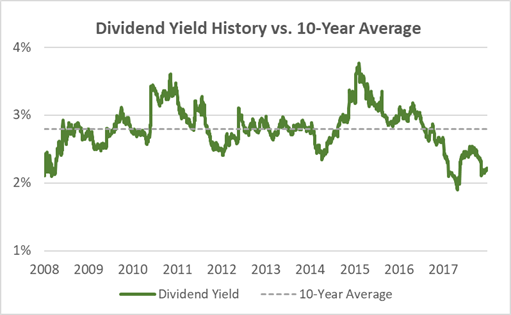Walmart‘s (NYSE: WMT) dividend history is long and shows steady growth. Income investors seek a steady stream of dividends, so Walmart might be a good addition. Let’s take a look at the business, dividend history and payout safety.
Business Overview and Highlights
Walmart is a $276 billion business. The company is based out of Bentonville, Arkansas and employs 2.3 billion people. Last year, Walmart pulled in $500 billion in sales, which breaks down to $218,000 per employee.
The company runs within the consumer sector and holds a great credit rating (AA) from the S&P. This allows Walmart to issue cheap debt to expand operations and pay dividends.
Walmart got approval to acquire Flipkart in India for $16 billion. It’s a big move into e-commerce. Walmart is gaining ground in one of the world’s largest emerging markets. The price tag is high, but this might be the boost that Walmart needs to catch up to Amazon. If the integration goes well, Flipkart will add steady, growing cash flows to support Walmart’s dividend payouts.
10-Year Dividend History
The company paid investors $0.95 per share a decade ago. Over the last 10 years, the dividend has climbed to $2.04. That’s a 115% increase! You can see the annual changes below.

The compound annual growth is 7.9% over 10 years… but over the last year, the dividend climbed 2%. The slowdown in dividend growth isn’t a great sign. However, Walmart still might be a worthwhile income investment. Let’s take a look at the yield.
Current Yield vs. 10-Year Average
Walmart’s long history of paying dividends makes it one of the best dividend stocks around. This also makes the dividend yield a solid value indicator. A higher yield is generally better for buyers. Safety is also important, and we’ll look at that soon.
The dividend yield comes in at 2.22%, which is below the 10-year average of 2.8%. The following chart shows the dividend yield over the last 10 years.

The lower yield shows that investors have pushed up the company’s market cap. Investors might be expecting higher growth and payouts. But more often than not, the dividend yield is mean-reverting with changes in share price.
Improved Dividend Safety Check
Many investors look at the payout ratio to determine dividend safety. To do this, they look at the dividend per share divided by the net income per share. So a payout ratio of 60% would mean that for every $1 Walmart earns, it pays investors $0.60.
The payout ratio is a good indicator of dividend safety… but accountants manipulate net income. They adjust for goodwill and other non-cash items. A better metric is free cash flow.
Here’s Walmart’s payout ratio based on free cash flow over the last 10 years.

The ratio is volatile over the last 10 years and the trend is down. The last reported year shows a payout ratio of 33.4%. This gives plenty of wiggle room for Walmart’s board of directors to raise the dividend.
Closing Thoughts on Walmart’s Dividend History and Safety
Walmart has a long history of paying growing dividends, and the payout ratio shows that dividend raises are likely. Although, investors have pushed up the share price and the yield is near historical lows. That’s to be expected after a 10-year bull market.
If you want to see analysis of other dividend paying companies, please comment below. You can also check out another top dividend paying company by clicking here (Emerson Electric Dividend History)
Good investing,
Rob
